SolidRun has a new development in their NXP Layerscape LX2160A based systems this week. The new SolidRun HoneyComb LX2 Server packages two of their familiar HoneyComb LX2K boards into a single chassis. This includes a power supply and accommodations for 2.5″ or 3.5″ SATA storage. While the board at the core of this system is not a new part this does mark a milestone for deploy-ability of Arm systems at a tier that does not have a lot of other attention.
SolidRun HoneyComb LX2 Server Background
To take a step back and look at where this system lands, the Arm ecosystem currently has a lot of activity at the top and bottom of the price and performance spectrum, with not a lot of options in the middle. That is where SolidRun’s new dual-node server aims to compete.
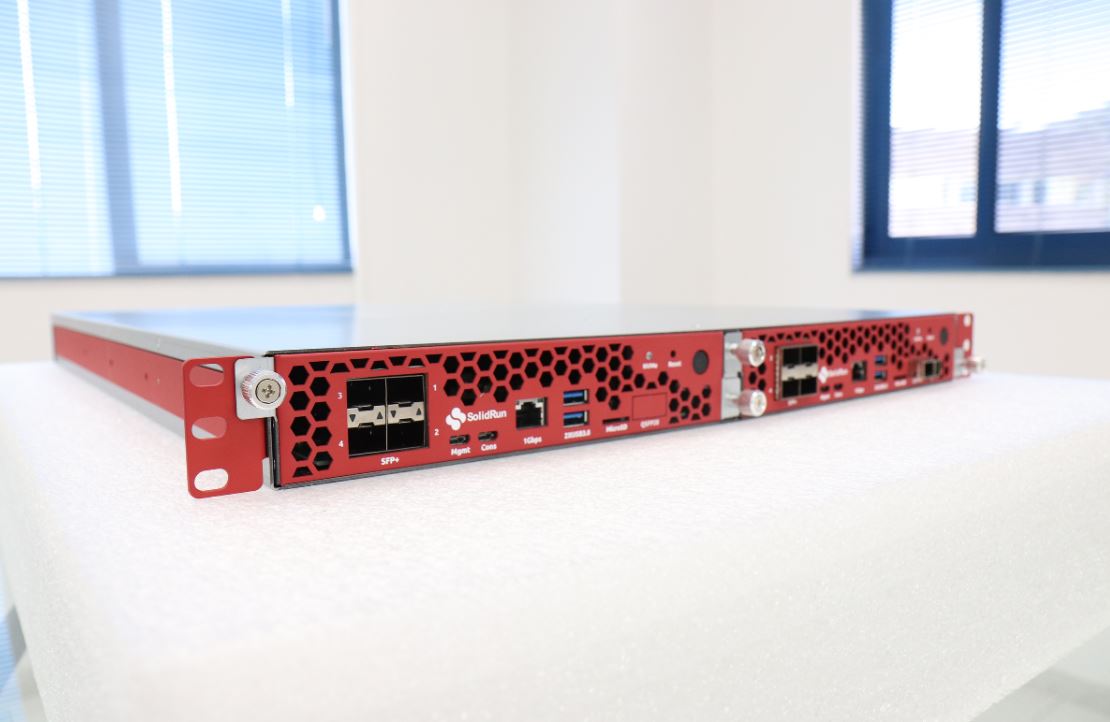
Raspberry Pi systems between $5 and $100 have shipped over 30 million units. Developer kits such as these have earned a level of ubiquity in learning and DIY spaces for making it really easy to try out new concepts in programming or “physical computing.” While the Raspberry Pi Foundation has demonstrated using the Raspberry Pi 4 in production, including running Raspberry Pi 4s to serve their website for the launch of the Pi 4, that is not quite what they are designed for. In that example, the Foundation included their own hardware between more performant load balancers and database machines as a demonstration of their very capable new devices, not quite as a shot across the bow to the Xeons they may have replaced.
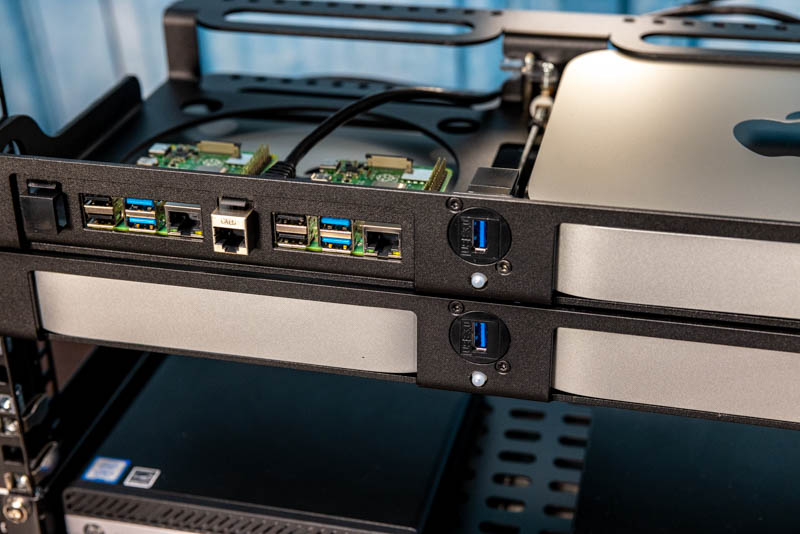
On the other end of the spectrum, several orders of magnitude away, Ampere Altra is making a case for permanently replacing some of those Xeons for certain customers. Ampere’s price-to-performance numbers are impressive, as are figures like 160 cores for a 2 socket server and 128 lanes of PCIe Gen4 per socket. This underscores that this is a platform designed for cloud providers and hyperscalers. You can check out STH’s Ampere Altra Wiwynn Mt. Jade Server Review to learn more.
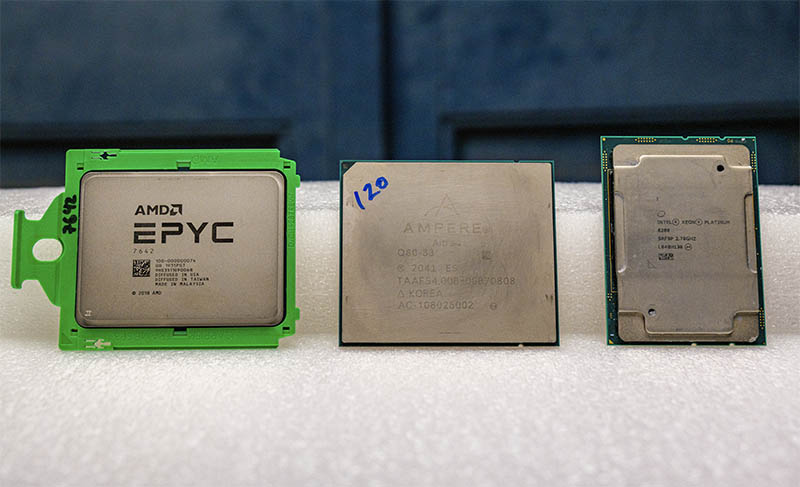
There is enough intrigue over the top-of-line Arm servers that developers wonder if there is not a better workstation-level/ or entry/mid-range server system. A prospective Arm developer would want something between $100 for a dev board and $4000 per socket for a screaming 2U. (Apologies to the $800 32-core 1.7GHz SKU at the other end of the Ampere Altra line.)
SolidRun has been positioning itself in this space for several years. Its LX2 products continue in active development. HoneyComb’s maturity dovetails with the work SolidRun has been doing on two fronts. It is servicing its niche and driving specific development (for example their high bandwidth networking) but return their development work to benefit the ease of adoption from mainline Linux.
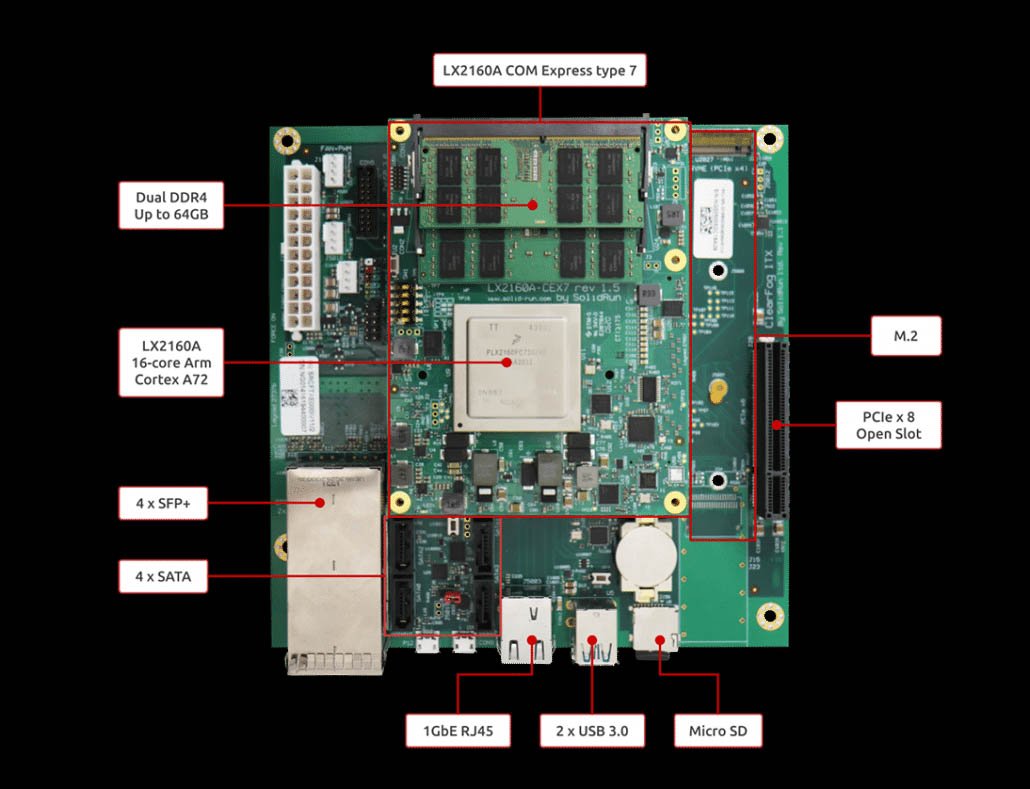
The HoneyComb LX2K is a COM Express Type 7 carrier for an NXP Layerscape LX2160A System-on-Chip with 16x Arm A72 cores running up to 2GHz. The COM Express Type 7 module has dual-channel DDR4 in SODIMMs for up to 64GB total. The carrier board exposes 4x SATA, one M.2 and one Micro SD slot for storage, four SFP+ (directly from the SoC) and one RJ45 at 1Gb for networking, dual USB 3.0 ports, and an open-ended PCIe x8 slot on a standard mini ITX form factor using standard ATX power. There is even the ATX standard power indicator and reset button header. The goal seems to be to create a platform that is easy to integrate into existing chassis and systems.
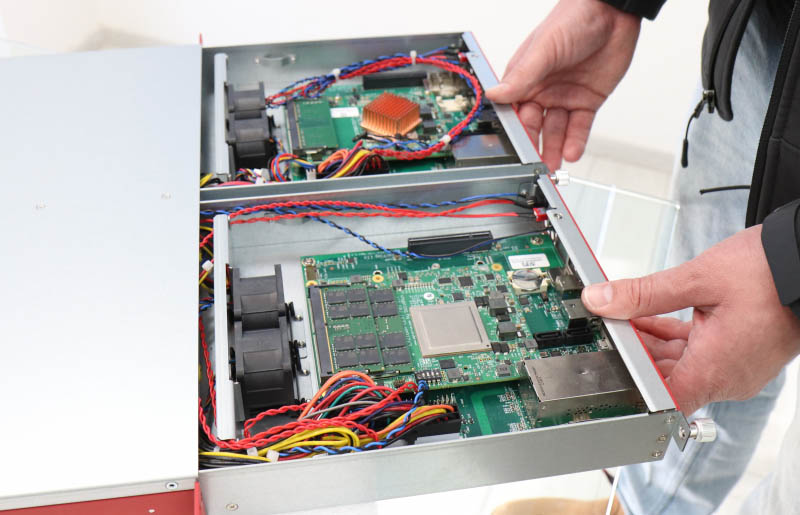
In the context of running highly deployable servers to replace Xeons, this may not be quite the same level of hardware maturity. On the other hand, having a dual-node 1U platform that one can deploy in racks and do Arm development is a big step forward. Not only do we get a bigger CPU, but we also get the ability to use a lot of standard components which will help boost the ecosystem as well. Adding a chassis with cooling and power may not seem like a big deal, but there is a large segment of the market that does not want to search for or cobble together these solutions. Instead, if the nodes are already in a 1U chassis, that lowers the friction and barriers to entry for development. This is still not a $400-500 PC or Atom server. Still, it is an important step in the right direction.
Final Words
SolidRun’s HoneyComb LX2K is a platform that is accessible and capable for development on 64-bit Arm architecture as a workstation. It is also becoming more deployment-ready for appliance-type power-conscious edge applications with the 1U chassis. Developers interested in using the HoneyComb board in production have faced the challenge of trying to rack-mount an ITX board. Bamboo Systems in the UK have an answer for developers ready to deploy an 8-node 1U, but that raises the bar back up the scale of Ampere Altra. The challenge with small server nodes is that as one scales, it tends to be more efficient having larger nodes. AWS Gravition2 is an important product for the industry, but it is also tied to the AWS ecosystem. The new availability to deploy two nodes in 1U targets the intersection of accessibility and capability for those interested to kick the tires on Arm in the wild.
We look forward to getting our hands on the dual sled system and doing an in-depth review. We will also pair that with approaching the HoneyComb Board as a workstation for daily-driver use. Leave a comment if you would like to see specific applications explored for either system.

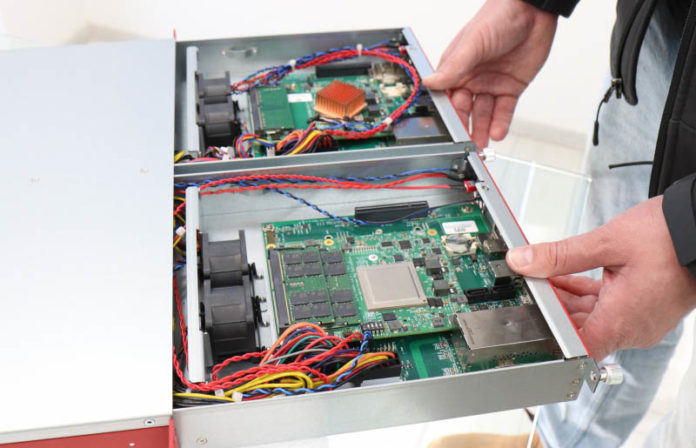



Until these guys clue into the fact that developer time is money, they’re not going to make a top-of-class IPS ARM “Workstation” and they’re not going to get any adoption.
Today, if you want to develop ARM, you should do it on Ampere, Graviton, M1, or 8cX/888 developer boards, which have a high enough single-thread performance that your developer isn’t going to be stuck waiting around for their IDE to respond, or for their final link to complete.
Developers don’t want to wait around. Companies don’t want to pay developers to wait around. Honeycomb and and others need to wake up.
Exactly how does the oddly-timed/inserted photo of the EPYC, Ampere, and INtel CPUs fit into this article?
Mark the entire paragraph before that photo is talking about Ampere and Xeon. Your comment is odd since that’s a logical image. I don’t think it’s the best image they could have used but there’s a paragraph right next to the image. Maybe you didn’t read?
@Cameron, questions for more in depth review:
– SATA III performance using 1 disk and using 4 disks.
– NVMe performance.
– does the PCIe slot support 4/4 bifurcation.
– raw packet forwarding performance amongst the 10 Gb interfaces using eg. Linux iptables.
– performance as a router and/or firewall using something like pfsense.
– how fast can it compile the Linux kernel, I suppose.
Cute toy, nothing more
It would be interesting to see one of these vs. the Avoton/Deverton systems that(unless I’m grossly misunderstanding something) seem to fill a similar niche: not overly punchy; but relatively low power and ample NICs unless the system is too cheap to bring them out.
in complete and eternal agreement with William Barath on the imperative need for OEM cpu manufacturers to seed top tier workstations ASAP I’ll add or else inevitably die a horrible slow death saluted by a ever diminishing echo of increasingly marginal “enthusiast reviews” on rarely seen websites. STH avoided such a ending in irrelevance by prying the hardware out of the glass cabinet worlds of vaporware but the ARM system world first needs to be making a few more boxes to begin with. Today, even one is a remarkable piece of news avidly sought-after and eagerly consumed. If there exited even any hint of forthcoming supply of the machines, I would seriously think about putting a real budget into covering the area properly. but it looks far too quiet out there even to someone who can use a few decades in the media to reach out.
Good kit for hobby or proto, still waiting to see how much commercial viability this kind of concept product might have. Curious to see the street price later.